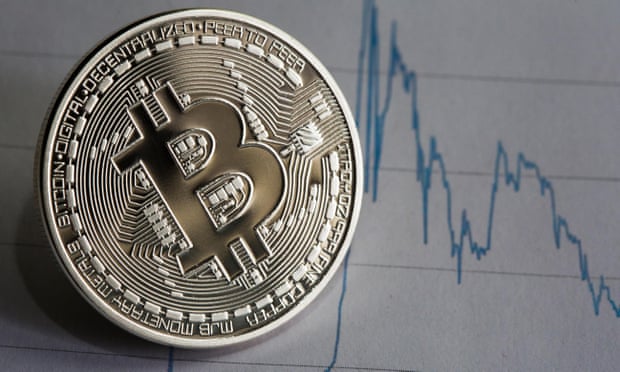A sharp rise in bitcoin prices has pushed the cryptocurrency above $30,000 (£24,118) for the first time since 10 June last year, just before the Celsius crypto lending company froze withdrawals in the run-up to its collapse.
Even given that recovery, the token is still well below its all-time high of $68,000 in November 2021, and far below where it was before the failure of the Terra stablecoin caused the “crypto winter”.
Nevertheless, bitcoin’s recent steady increase in value has sparked discussion of another cryptocurrency boom – and reignited fears of widespread manipulation in the market.
The collapse of Silicon Valley Bank last month and the broader contagion it has sparked across financial markets led some cryptocurrency fans to turn to bitcoin, the original and most valuable token in the sector, as a way of protecting against fears that the entire traditional “fiat” economy would crumble.
That attitude was typified by the US venture capitalist Balaji Srinivasan, who in March bet $1m that the price of a single bitcoin would top $1m by June this year. His claim was that the US dollar would shortly experience hyperinflation, causing the dollar value of a bitcoin to soar.
Q&A
What is bitcoin?
Show

Bitcoin is a ‘cryptocurrency’ – a decentralised tradeable digital asset. Invented in 2008, you store your bitcoins in a digital wallet, and transactions are stored in a public ledger known as the bitcoin blockchain, which prevents the digital currency being double-spent.
Cryptocurrencies can be used to send transactions between two parties via the use of private and public keys. These transfers can be done with minimal processing cost, allowing users to avoid the fees charged by traditional financial institutions – as well as the oversight and regulation that entails. The lack of any central authority oversight is one of the attractions.
This means it has attracted a range of backers, from libertarian monetarists who enjoy the idea of a currency with no inflation and no central bank, to drug dealers who like the fact that it is hard (but not impossible) to trace a bitcoin transaction back to a physical person.
The exchange rate has been volatile, with some deeming it a risky investment. In January 2021 the UK’s Financial Conduct Authority warned consumers they should be prepared to lose all their money if they invest in schemes promising high returns from digital currencies such as bitcoin.
In practice it has been far more important for the dark economy than it has for most legitimate uses. In November 2021 it hit a record high of more than $68,000, as a growing number of investors backed it as an alternative to other assets during the Covid crisis.
Bitcoin has been criticised for the vast energy reserves and associated carbon footprint of the system. New bitcoins are created by “mining” coins, which is done by using computers to carry out complex calculations. The more bitcoins that have been “mined”, the longer it takes to mine new coin, and the more electricity is used in the process.
“This is the moment that the world redenominates on bitcoin as digital gold, returning to a model much like before the 20th century,” he tweeted, explaining the bet. “Everything will happen very fast once people check what I’m saying and see that the Federal Reserve has lied about how much money there is in the banks. All dollar holders get destroyed.”
Alex Adelman, the chief executive of the bitcoin rewards app Lolli, said Monday’s rally “did not have a clear catalyst”, but that it was “a bellwether of bitcoin’s newly bullish market conditions and strong investor confidence. Bitcoin’s ongoing strength suggests that bitcoin is emerging from so-called ‘crypto winter’ into a new phase of strength and renewed interest from retail and institutional investors.”
But the recovery, after bitcoin prices hovered at $28,000 for almost a month before leaping the final $2,000 in a day, has also led to concern about market manipulation.
after newsletter promotion
Q&A
What is a stablecoin?
Show
A stablecoin, like the name suggests, is a type of cryptocurrency that is supposed to have a stable value, such as US$1 per token. How they achieve that varies: the largest, such as tether and USD Coin, are effectively banks. They hold large reserves in cash, liquid assets, and other investments, and simply use those reserves to maintain a stable price.
Others, known as “algorithmic stablecoins”, attempt to do the same thing but without any reserves. They have been criticised as effectively being backed by Ponzi schemes, since they require continuous inflows of cash to ensure they don’t collapse.
Stablecoins are an important part of the cryptocurrency ecosystem. They provide a safer place for investors to store capital without going through the hassle of cashing out entirely, and allow assets to be denominated in conventional currency, rather than other extremely volatile tokens.
A 2022 report published by the US National Bureau of Economic Research found that “wash trading”, the practice of selling cryptocurrencies between related parties to influence the reported price, averaged “over 70% of the reported volume” on 29 unregulated exchanges.
In June 2022, the US Securities and Exchange Commission (SEC) refused permission to launch a bitcoin-linked exchange traded fund, which would allow investors to buy exposure to the cryptocurrency on the public stock markets, after concluding that it was impossible to prevent fraud and manipulation in the market from affecting the price.
As well as wash trading, the SEC said the market could be influenced by individuals with a “dominant position” in bitcoin manipulating its pricing, through fraud and manipulation at trading platforms, and through manipulative activity involving stablecoins “including tether”.




